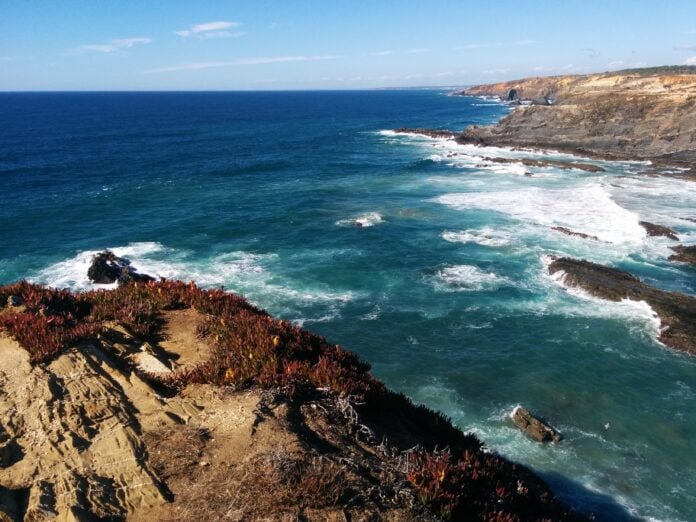We need to know how to interpret and distinguish legends from reality, as well as why these legends exist in the culture of each people and region. Portugal is a country extremely rich in stories, myths, and ancient legends, which inspire customs and superstitions. There are hundreds of Portuguese legends, tales, sayings, and popular beliefs that make our culture so rich and interesting.
Told in the evenings in the cold winters by our ancestors, from werewolves to fairies, witches to mermaids, ghosts and feathered souls to the miracles of saints, there isn’t a creature that our folklore doesn’t include, with the exception, perhaps, of vampires, because this isn’t a subject that is part of our legendary imagination.
But not all Portuguese legends are about creatures and monsters. Many of them reveal lands and people of courage, stories of revenge, justice, impossible loves, and perfect loves, others concern true events but with touches of imagination, probably to increase the dramatic or heroic charge of what really happened.
In fact, legends are such an important part of Portugal’s core that some even precede the country’s history, such as the legend of the Battle of Ourique. The legend goes that shortly before the battle, Afonso Henriques was visited by an old man, whom the man who would become Portugal’s first king four years later believed he had seen in his dreams.
The man gave him a prophetic revelation of victory. He also told him to leave the camp alone the following night, as soon as he heard the bell from the hermitage where the old man lived. The king did so.
It was then that a ray of light illuminated everything around him, allowing him to gradually make out the Sign of the Cross and Jesus Christ crucified. Overcome with emotion, he knelt down and heard the voice of the Lord, who promised him victory in this and other battles. The next day, Afonso Henriques won the battle.
According to legend, King Afonso Henriques then decided that the Portuguese flag would have five shields, or quinas, in a cross, representing the five vanquished kings and the five wounds of Christ.
There are so many myths that have shaped this country that it would be impossible and unfair to contain them all in a single article, so I’ve decided to create a series that will cross the country from north to south. In this article, we’ll visit the legends that have the north of Portugal as their backdrop. Let’s get to it!
Legend of St. Vincent, Patron Saint of the City
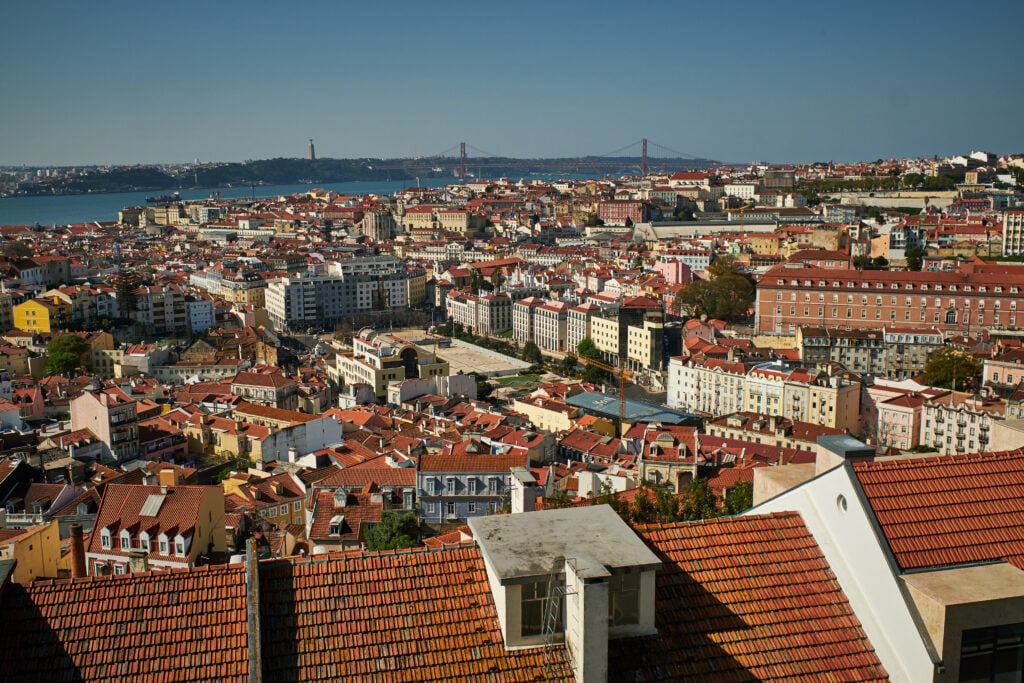
In the 4th century, Vincent of Zaragoza was tortured by order of Emperor Diocletian for refusing to worship pagan gods. The martyr was put on a grill over hot coals and his legs and arms were torn off, the body parts being abandoned in a field to be devoured by dogs and wolves. It was then that the crows appeared for the first time in the narrative, defending the body from this final carnage.
With the Muslim invasion of the Iberian Peninsula, Vicente’s remains were placed on a boat that somewhere in time washed ashore on the cape of Sagres. In the 12th century – eight centuries later – King Afonso Henriques promised to recover the martyr’s bones if he succeeded in conquering Lisbon, which he did. Two ravens then protected the ship on its journey to Lisbon. The saint became the patron saint of Lisbon and the ship and the ravens became symbols of the capital.
Legend of the Works of Santa Engracia
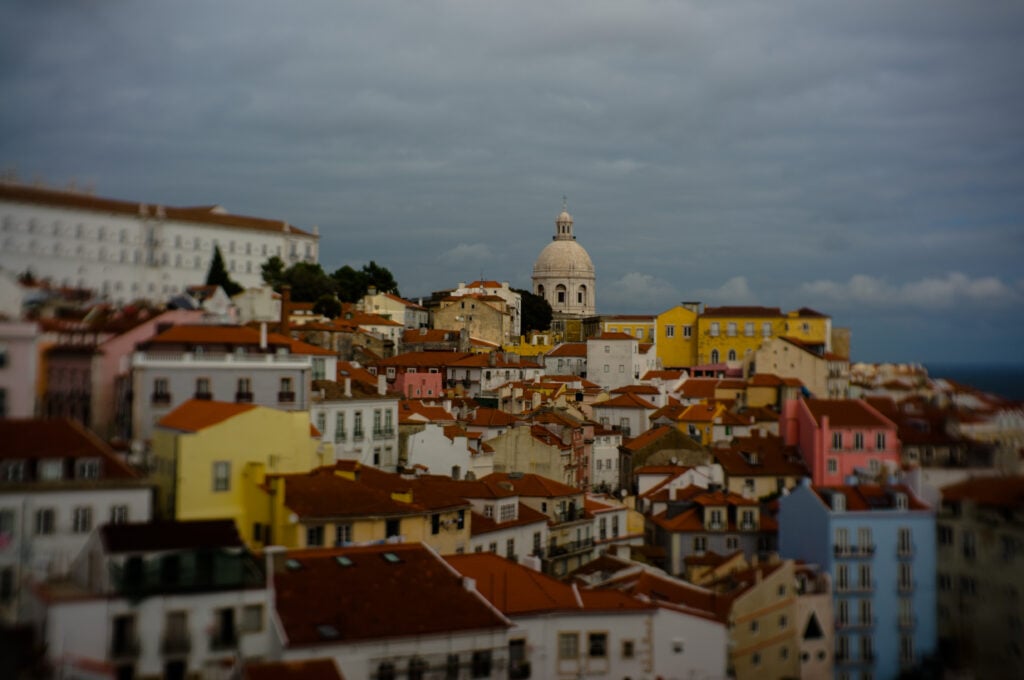
Legend has it that in the mid-1630s, a beautiful maiden by the name of Violante, daughter of an important Lisbon nobleman, fell in love with a young Christian by the name of Simão Pires Solis. The young woman’s father, who did not take kindly to the two lovers, had his daughter locked up in the convent of Santa Clara, located next to the church of Santa Engrácia, which was still under construction.
The young Simão Pires Solis didn’t deny his love for Violante and rode every day to the convent of Santa Clara to meet Violante on the sly. One day, Simão asked his beloved to run away with him. That night, by coincidence, the reliquary of the Portuguese martyr Saint Engracia, so dear to Infanta Maria, was stolen.
The next day, on the agreed date, Simão Pires Solis was woken up by the king’s men, who had come to arrest him, accusing him of stealing the relics from the church of Santa Engrácia, located very close to the convent. In order not to compromise Violante, Simão Solis didn’t want to reveal why he had been seen there the night before.
Despite repeatedly claiming his innocence, Simon Solis was arrested and sentenced to death at the stake for this reason, aggravated by his Jewish ancestry. The execution ceremony took place next to the new church of Santa Engrácia, work on which had already begun.
Legend has it that when the flames engulfed Simon Solis’ body, he cried out that he was as certain to die innocent as that the work would never end. Also, according to legend, years later, the novice Violante was called to the presence of a dying man when he was at death’s door, because she wanted to confess to him that he had been the thief of the reliquary of Saint Engracia.
Aware of Simon Solis and Violante’s secret relationship, he had framed the young man, who was seen there almost every night, and now wanted to ask for forgiveness from the woman who had lost her love in the most cruel and unjust way anyone could. However, Violante accepted his forgiveness.
What is certain is that the work on the church, which began when Simão Pires Solis was in charge, seemed never to end. So much so that people have become accustomed to comparing everything that seems to have no end to the works of Santa Engrácia, hence the popular saying.
Legend of Santa Iria
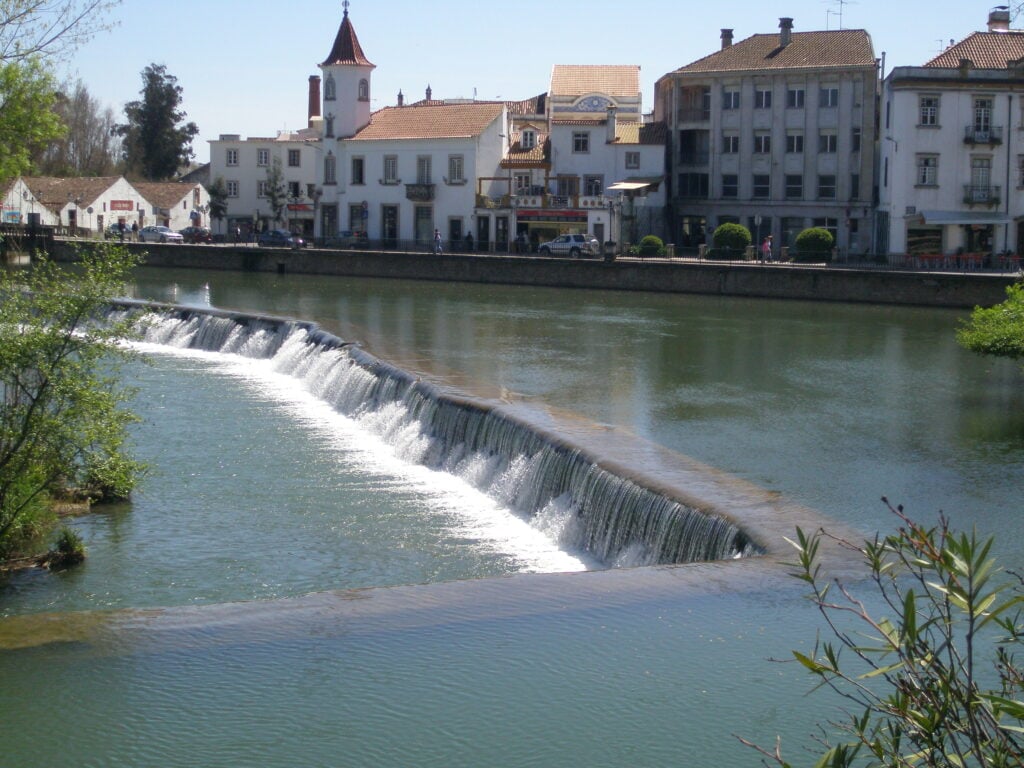
The story goes that in ancient Nabância (now Tomar), Iria was born, a beautiful young woman named Iria or Eirena, who belonged to a wealthy family in the region. From an early age, Iria discovered her religious vocation and entered a monastery. The young Iria received a thorough education and was professed in a monastery of Benedictine nuns, which was governed by her uncle, Abbot Sélio.
Because of her beauty and intelligence, Iria soon won the affection of the nuns as well as the locals, especially the young men and noblemen, who disputed Iria’s virtues among themselves. At the time, the region was ruled by Prince Castinaldo, whose son Britaldo was in the habit of composing troves near the church of St. Peter.
One day, Britaldo saw Iria and fell madly in love with her. He became sick with love and in a feverish, desperate state, he demanded the young woman’s presence. Iria asked him to forget her because her heart and her love were from God. Britaldo agreed, on the condition that she belonged to no other man.
Remigius, a monk who was Iria’s spiritual director, was aware of Britaldo’s love affairs, and the maiden’s beauty had not gone unnoticed. Burning with jealousy, the monk Remigius gave Iria a tisane that was supposed to make her drunk, and which caused her body to appear opulent after pregnancy.
For this reason, she was immediately expelled from the convent, retreating to the river to pray in despair. When Britaldo found out, he was furious and jealous. He followed her on one of his usual trips to the River Nabon, where Iria was murdered by a servant of Britaldo’s or by Britaldo himself, stabbed, and thrown into the water.
Iria’s body was carried by the waters of the River Nabão to the River Zêzere and from there to the Tagus. After many searches and when they had almost given up, Iria’s body was found near the town of Scalabis (Santarém), enclosed as if by miracle in a beautiful marble tomb.
They wanted to remove it, but the waters of the Tagus, which had suddenly subsided to show the tomb, rose again, covering the martyr’s grave forever. The people surrendered to the miracle and she was considered a saint. From then on, the town was called Santa Iria, later Santarém.
About six centuries later, legend has it that the waters of the Tagus opened up again to reveal the tomb of Queen Isabel, who worshipped Saint Iria.
Did you know that Tomar is actually home to one of Portugal’s World Heritage Sites? That’s right, the Convent of Christ is a marvel that you can’t miss. To find out what else there is to see, head to our Tomar City Guide.
Legend of the Boca do Inferno
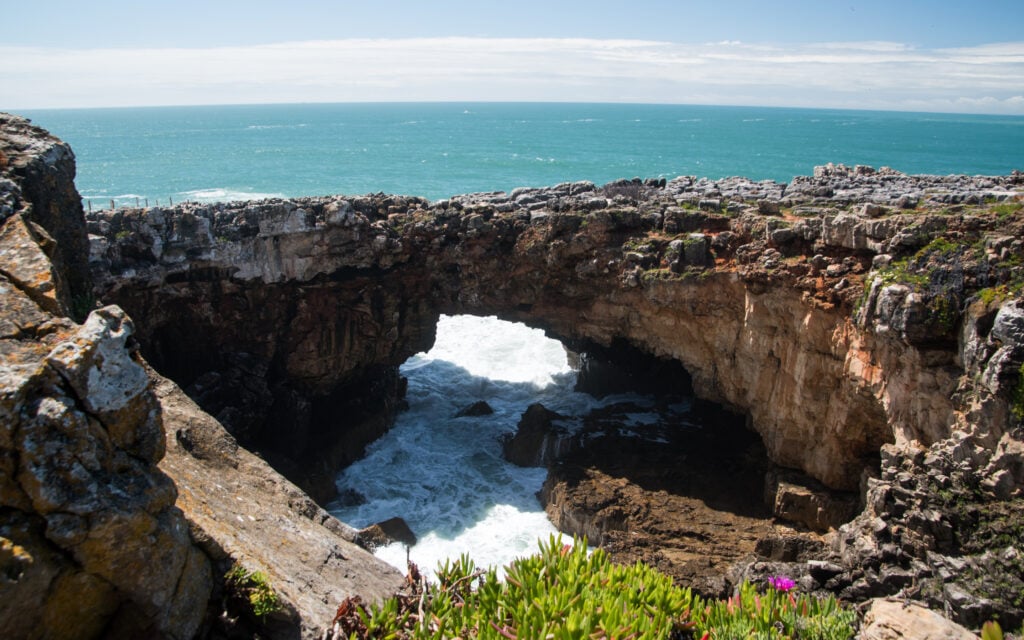
This legend takes place in the Cascais area, where it is said that there was once a castle inhabited by a demonic sorcerer (along with the version that says he was a malevolent giant). This sorcerer and malevolent figure chose the most beautiful maiden in the area to marry, but when he saw her in person and saw her rejection, he decided to arrest her and hide her, mad with jealousy at her beauty.
Obsessed by the beauty of the young woman and angry at being unrequited, the man locked her in an inaccessible tower near the sea and hired a faithful knight to guard her. The maiden was confined to a lonely tower, with the knight on guard, without ever being able to see each other.
The years went by and the two chatted, keeping each other company, until one day the knight, out of curiosity, decided to go up to the tower to see his friend. Legend has it that when the knight opened the door, he was overwhelmed by the beauty of the maiden and quickly fell in love with her.
The lovers decided to flee on horseback, forgetting that the sorcerer had bewitched the maiden and knew everything. So they fled on the sorcerer’s white horse and galloped along the cliffs of the coast on a beautiful moonlit night. The sorcerer, enraged and thirsty for revenge, summoned a fierce storm that hit the rocks where the lovers were fleeing.
Legend has it that the cliffs opened like a mouth and the waters swallowed up the maiden and the knight, crashing them into the raging sea. The hole has never closed since and on stormy days it seems that the place itself regrets the tragedy that took place there.
The local population began to call it “Boca do Inferno” (Hell’s Mouth), because of the unfortunate fate the pair met. On windy and stormy days, people seem to want to tell everyone the unfortunate story of those two lovers.
But Boca do Inferno is but one of the many, many highlights of Cascais. Want to find out what else there is in the “Portuguese Riviera”? Then make sure you check out our Cascais City Guide.
Legend of the Alfacinhas
As well as being one of Portugal’s best cities to live in, Lisbon is also surrounded by small and large Portuguese folk legends. One of them is the Legend of the Alfacinhas, which tries to explain why the city’s inhabitants are called colloquially called alfacinhas.
One of the theories goes back to the occupation of Lisbon by the Moors between 711 and 714, who began to cultivate “Al-Hassa”, which eventually became “Alface” (lettuce) in Portuguese. The plant was used for various purposes, both medicinal and culinary.
According to legend, after a war, the locals only had lettuce to eat, which is why they became known as this.
Lisbon is a city with so much to offer (other than lettuce!), so make sure you read our Lisbon Travel Guide before you get there, so that you don’t miss a thing.
Legend of Ulysses and the Founding of Lisbon
In this legend, Ulysses, during the ten years he was lost trying to return to Ithaca, is said to have landed at the mouth of the Tagus, in a territory called Ophiusa, which meant “Land of the Snakes” and was ruled by a fearsome and seductive half-woman, half-snake queen, who fell in love with the hero, promising him the creation of the most beautiful city in the world, which he would name: Ulisseia.
In some versions, the queen’s strange anatomy is no obstacle to Ulysses falling in love with her and climbing to the highest mountain, shouting to the winds that he would find the most powerful city in the world: Olissipo.
In others, the hero deceives the queen, pretending to be in love with her, while the sailors recover and refuel the ships. When they are ready, Ulysses and his men set off under cover of night, and the queen, discovering that she has been abandoned, runs snaking after the hero, opening up valleys with her body and thus creating the hills of Lisbon.
Last Thoughts
Portuguese legends are not just stories from the past; they are threads woven into the tapestry of national identity, shaping world views and passing on values from generation to generation. Each tale, such as the epic Battle of Ourique, not only feeds the collective imagination but also influences national symbols, such as the chevrons on the flag.
Today’s modern, cosmopolitan Lisbon wasn’t always like this. In fact, there was a time when Lisbon was still a place where the country’s different cultures came together, yet without mixing, thus maintaining their traditions and myths. This is one of the many explanations as to why this region is so rich in legends.
Just as Tolkien believed, these legends are not just fiction; they are reflections of deep truths that resonate through the centuries. The richness of Portuguese culture lies not only in its documented history but in the narratives that dwell in the hearts of the people, continuing to inspire and enchant each generation that delves into these timeless stories.
Thus, Portuguese legends remain not only as accounts of the past but as windows to understanding the soul of a people and the essence of their rich heritage.
Make sure you explore the country through its legends in these other articles: Northern Portugal’s Folk Tales, Central Portugal’s Folk Tales, Southern Portugal’s Folk Tales, and Portuguese Islands’ Folk Tales.

